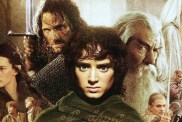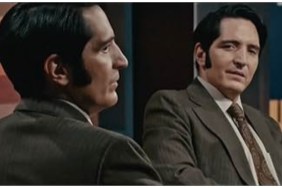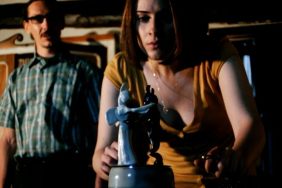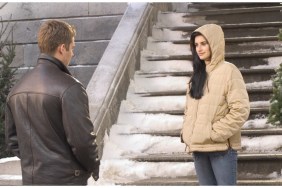An appreciation of William Castle’s underrated 1964 thriller The Night Walker
By the time producer/director/showman extraordinaire William Castle began production on the movie that would eventually be known as The Night Walker, he was already a legend. Castle, for those not-in-the-know, had found his cult following based on the fact he battled television better than the big studios could. By that, I mean that when TV first appeared on the scene, popping up en masse in every American living room, movie theaters and the entities that supplied them with celluloid product were in jeopardy. Why bother leaving the comfort of your own home and paying for entertainment when you could sit on your sofa, drink beer, stuff your face and have those glowing distractions come at you for free? Hollywood answered this decline by making movies bigger, wider, longer, louder, in 3D, technicolor, Cinerama, VistaVision and all other manner of sensorial experience designed to woo patrons back to the hard tops. It was the same when radio inspired the birth of the “talkie” and it’s the same now, with easy access media inspiring an endless glut of FX packed superhero movies and remakes of proven franchises.
But back to Castle.
An avid lover of fantasy and horror since childhood, Castle was also an unapologetic hustler, in love with the marketing of movies as much as he was the filmmaking process itself. After a stint as a kid working for Columbia Pictures and later directing a myriad low budget potboilers, Castle hit pay-dirt with the 1958 thriller Macabre, in which he famously came up with the gimmick of issuing a life insurance policy in case audiences died of fright during the film’s running time. Of course, as fun as Macabre is, it wasn’t that scary as to cause heart failure, but audiences were dazzled by the come-on and the movie did boffo box office.
Castle was on to something.
The following years saw Castle pumping out a slew of low-budget, high concept horror films, each one armed with an elaborate gimmick. Castle himself, smiling and chomping on a cigar, turned himself into a brand. He was like a downmarket carny riff on Hitchcock, catering to kids who wanted maximum thrills for date nights and the biggest bang for their hard earned bucks. In The Tingler, he devised a technique to wire participating theater seats with a mild electric current, so when the parasite in the film jumped on its victims, pundits got a real deal shock. In House on Haunted Hill, he invented “Emergo”, which meant that in a key moment, a skeleton screamed from the scream into the audience. In 13 Ghosts, audiences were given a “ghost viewer” that enabled them to either see or obscure the spooks on screen. In the Psycho rip-off Homicidal, he gave audiences the chance to run from the theater and get their money refunded in the “coward’s corner”. It’s a great film. I screened it once at a film night I ran in Toronto. No one chickened out and left the theater, though. Bummer.

But with 1964’s The Dream Killer – later renamed The Night Walker – Castle opted to give his shtick a bit of a break. Psycho had indeed defied audience expectations by delivering a grisly, lower budgeted black and white horror movie that audiences flocked to (and Hitch may have taken a page out of Castle’s book for the wild marketing campaign) and was a film that exemplified quality. Hiring Psycho author Robert Bloch to pen the script (as he did with his previous film, the similarly gimmick-free Joan Crawford proto-slasher Strait-Jacket), The Night Walker was meant to be a straight up “woman in jeopardy” thriller, albeit one laced with ample mania and a saturation of hallucinatory visuals. He cast former Hollywood sex siren and beloved actress Barbara Stanwyck (Baby Face, Double Indemnity) as his lead (it would be her last theatrical film) along with Stanwyck’s ex-husband Robert Taylor as the male co-star. The results were alarmingly good. In fact, The Night Walker might be Castle’s best directorial effort. But without a snazzy gimmick to hook the youth market and armed only with a middle-aged cast, the movie was not successful. Because of this, coupled with the movie’s sparse presence on home video (the Universal VHS went out of print in the early ’90s and the film only recently made it to DVD), The Night Walker is rarely discussed when mentioned Castle’s vast and storied career.
In it, Stanwyck plays Irene, the tormented wife of super-jealous, blind and generally unpleasant and insane millionaire and hobby-scientist who suspects that his wife is sleeping with, well, everyone. Not that Irene doesn’t want to get it on with other men. She keeps dreaming of a tryst with some nameless lad and her husband’s lawyer (Taylor) clearly has the hots for her. But, despite her husband’s relentless screaming and stalking and spying, she remains true to her vows.
When her hubby’s lab explodes and takes him with it, the newly-minted widow leaves her mansion home and tries to rebuild her life. But those hazy dreams of mysterious lovers plague her but now, the dreams are getting worse…and weirder. As fantasy and reality begin to bleed into each other, Irene begins to think she’s losing her mind. And she might be. And maybe someone is helping the process along…

The Night Walker is a tense, stylish and wildly entertaining horror film and Stanwyck is terrific in it. She was always terrific. Even in the movie she did prior to this one, the tacky Elvis vehicle Roustabout, she was great and, even in middle age, she was an incredibly attractive woman. Never beautiful, per se. But magnetic. As Irene, she runs the gamut, from hysteria to horror to rage to passion and warmth. And you believe it all. It’s a fully fleshed out performance. But, of course, we can credit the writer for giving her a solid foundation and certainly Bloch was one of the greatest authors of horror, lurid melodrama and dark fantasy of all time, one who always put character first and was ever-empathetic to the mind gone mad.
Also of note is Harold Stine’s shadowy, shuddery cinematographry, especially during the delirious dream sequences. Even now, I suggest not watching The Night Walker at night. Those nightmares are most certainly chilling, with dutch angles, dry ice and a plethora of wax dummies standing in half-dead tableaux, odd and unsettling voice overs leaking phantasmagorically from their mouths. If you’re a Tourist Trap fan, many of these passages will remind you of that unforgettable and underrated 1979 film.
Gelling it all together is a crazy-cool score by Vic Mizzy, best known as the man who wrote the theme for TV’s The Addams Family. Slinking along with a surf-rock spine, the bass, piano and orchestra-based score is macabre, groovy and generally bloody amazing. Here, check it out:
After the failure of The Night Walker, Castle continued to make macabre movies, but never went back to the over-the-top gimmick-soaked glory days, instead focusing on making a slew of great and weird thrillers (we’re especially fond of his final directorial effort, 1974’s Shanks). And, of course, so enamored was he with the work of Polish filmmaker Roman Polanski that he produced Polanski’s American breakthrough film, the 1968 horror masterpiece Rosemary’s Baby. In 1975, he produced Jeannot Szwarc’s mutant cockroach shocker Bug, which I actually like better than Rosemary’s Baby and was Castle’s final film. But that’s another story…









